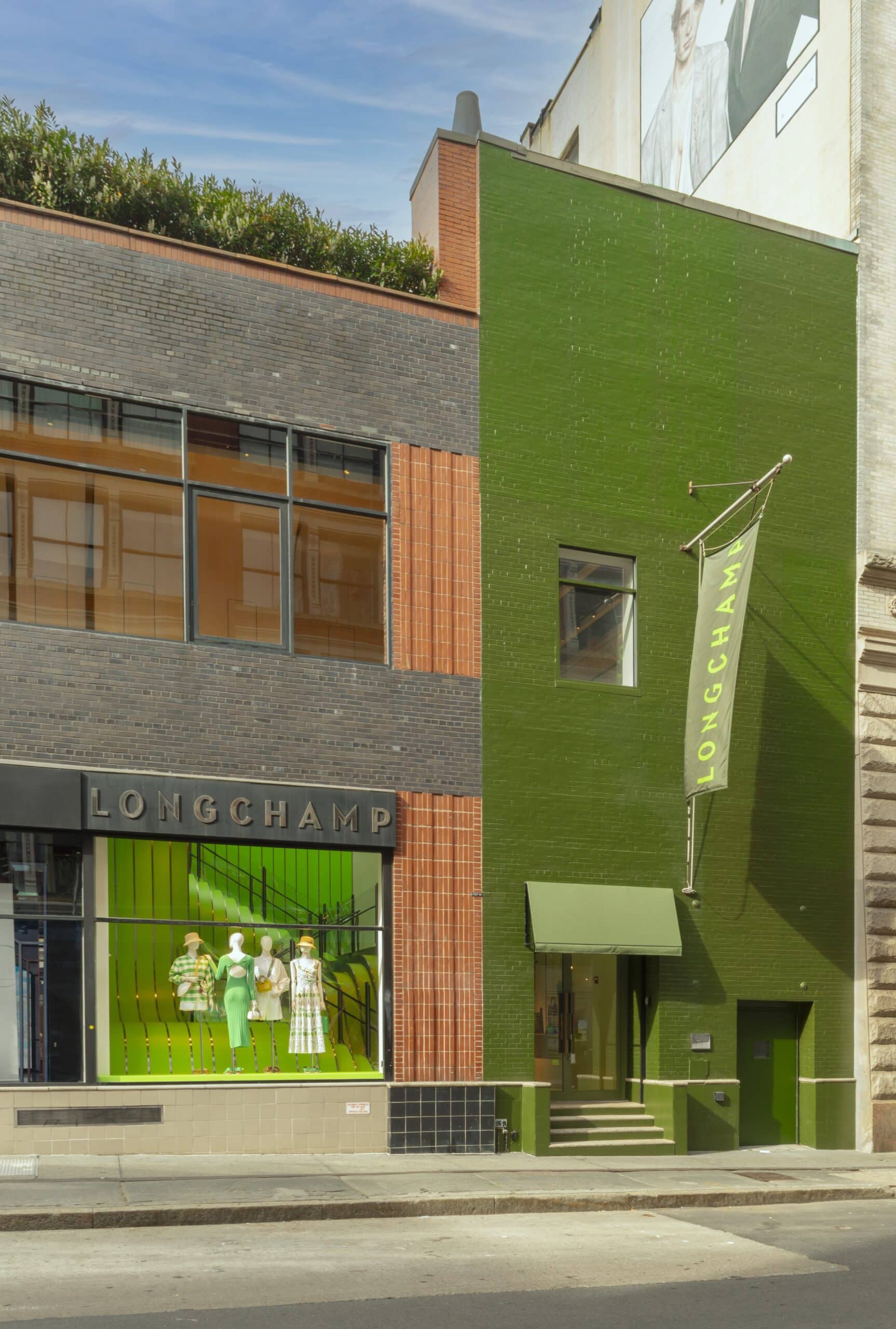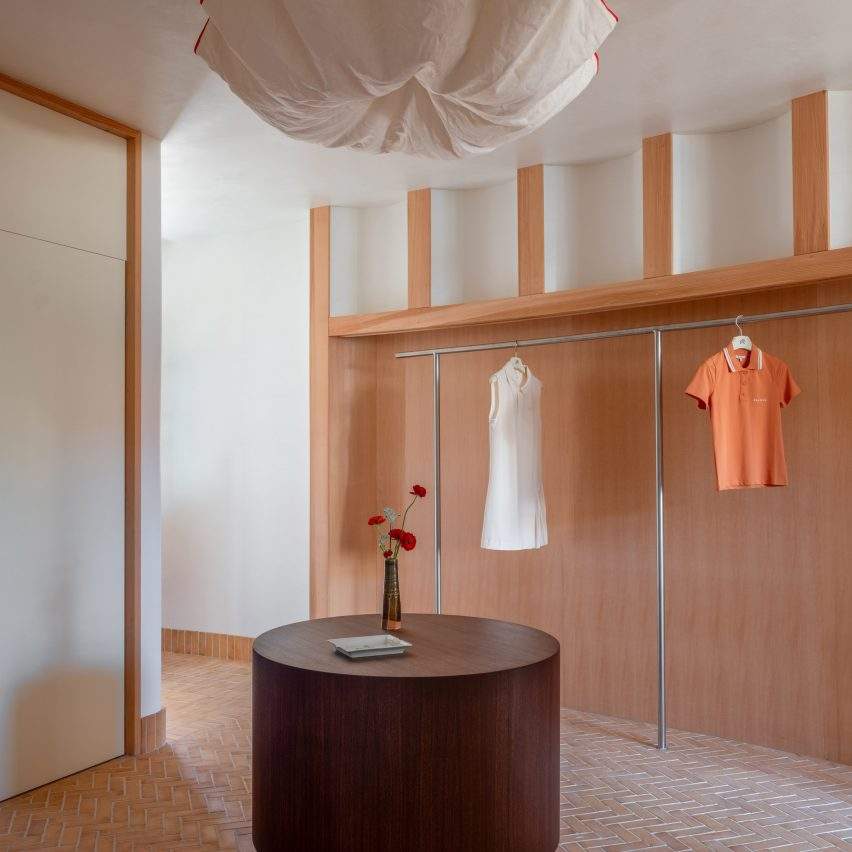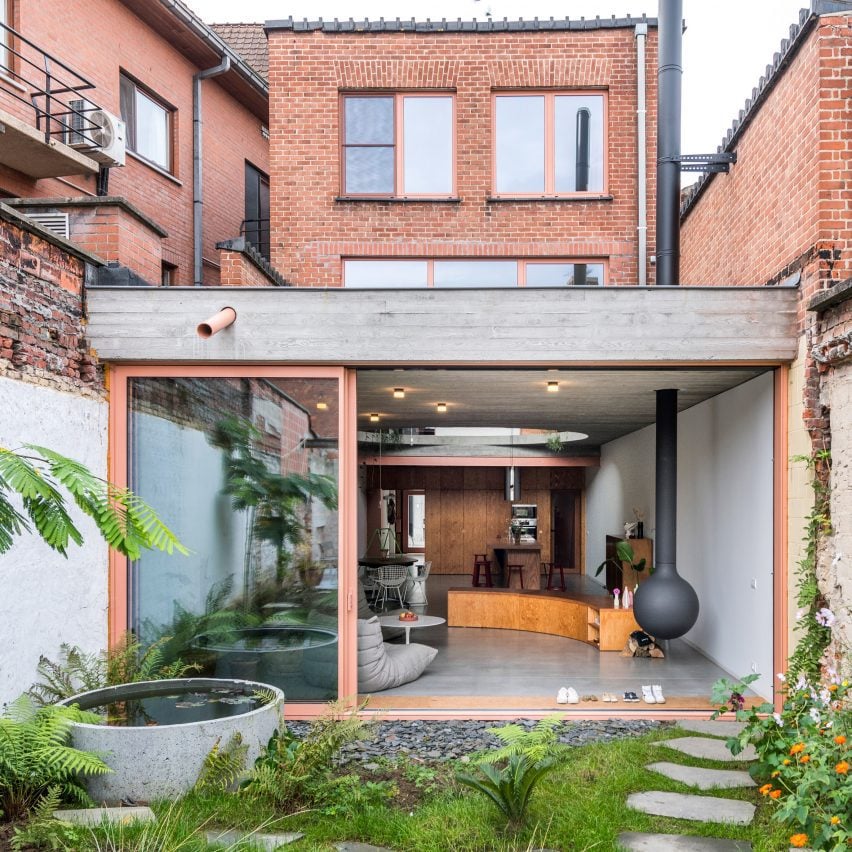Thomas Heatherwick revamps his New York flagship for Longchamp – 20 years after he first designed it
Design That Attracts Movement: How Heatherwick Blended Architecture and Sensory Experience
In 2004, British designer Thomas Heatherwick was commissioned to design the flagship store for the brand “Longchamp” in New York City. Although he was not yet well-known in the United States, he decided to adopt a bold approach that combined movement and visual space with one clear goal: to attract passersby from the street and encourage them to ascend to the upper floor.
Stairs as an Architectural and Experiential Element
Instead of designing a traditional entrance, Heatherwick chose to penetrate the building’s structure from within and install a wave-like staircase made of steel ribbons, which appears to flow from above like a metallic waterfall. These stairs were not merely a means of moving between floors, but a visual sensory experience, forming what resembled a “hill” inviting visitors to climb it, redefining the relationship between the shopper and the space.
From Functional Transition to Visual Experience
This design approach goes beyond the basic function of stairs. They transformed from a mere structural element into a visual medium that tempts the user to move, generating a feeling of discovery and immersion within the place. Perhaps for this reason, The New York Times described the store in its review as more of an “artwork” than a commercial space.
Brand and Design Evolution: From Boldness to Sustainability and Real Experience
More than two decades have passed since the opening of Longchamp’s flagship store in New York, a project that marked an important starting point for both Thomas Heatherwick and his team, as well as the brand itself. During this period, each has witnessed significant growth and development.
Thomas Heatherwick’s Journey
Heatherwick is no longer the emerging designer he was in 2004; today, he is one of the most prominent innovators in design and architecture, with notable projects spanning New York and London, such as “Little Island” and “Coal Drops Yard.” His works reflect a blend of artistic and technical innovation, making him a key figure in the global design scene.
Longchamp’s Developments and Market Changes
As for Longchamp, it has taken major steps in expanding its product range and strengthening its commitment to sustainability, along with rethinking how to deliver the shopping experience to customers. With the increasing reliance on digital commerce, reassessing the role of physical stores has become essential.
Heatherwick comments on these shifts in Wallpaper magazine:
“You can buy anything you want online. Digital over-saturation has taken over, which means you need over-saturation of reality.”
This statement summarizes an important transformation in the understanding of the shopping experience, where brands are moving toward creating interactive physical environments that enrich the virtual experience, compensating for the human need for connection, touch, and direct presence.

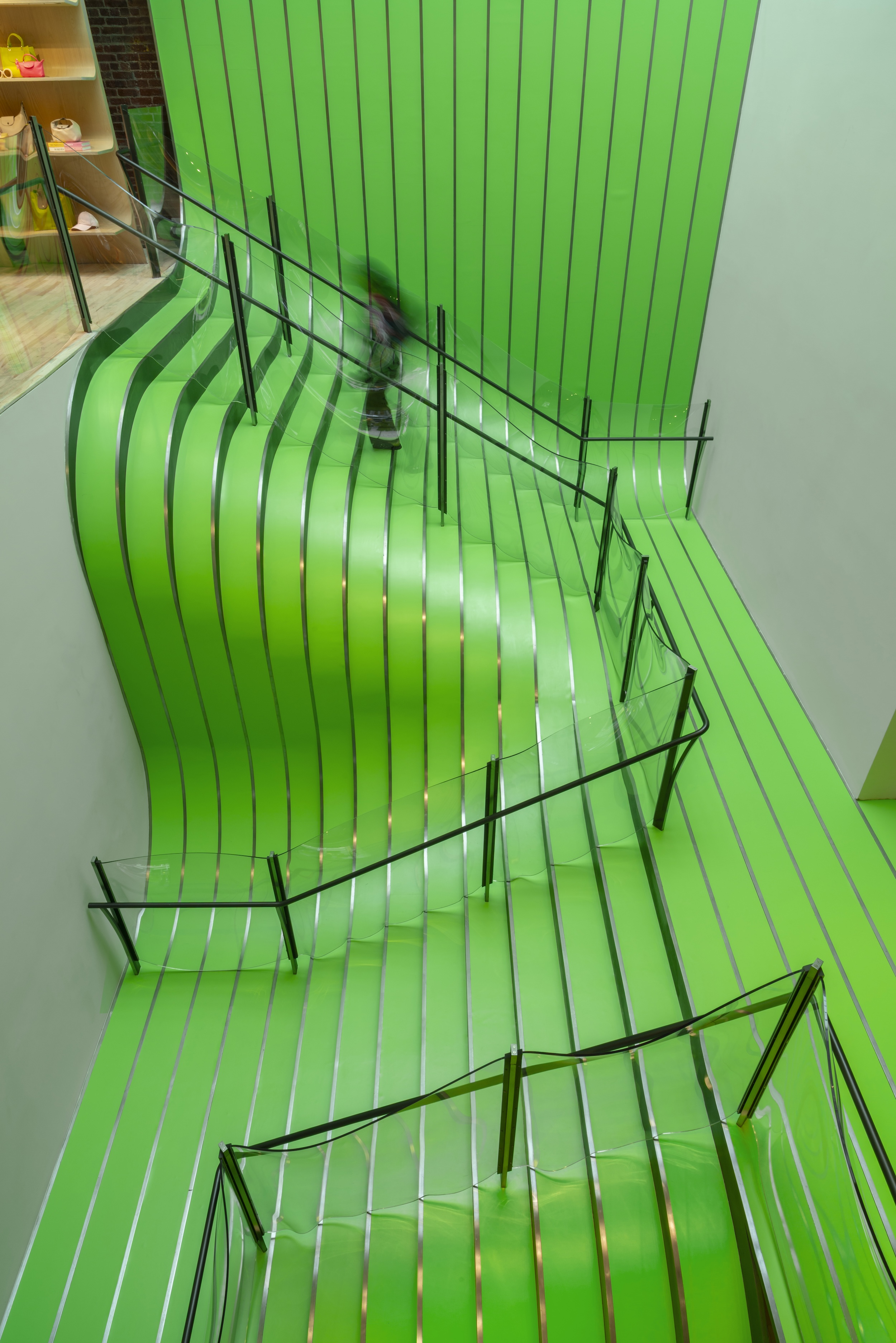
The Beginning of the Partnership Between Heatherwick and Longchamp: The Design That Opened Doors
The relationship between Thomas Heatherwick and the Longchamp brand began in 2003, when the designer was commissioned to develop a new bag design for the company. The design featured a distinctive long zipper that wrapped around the entire bag, giving the product an innovative and practical character at the same time.
Management’s Reaction and the Importance of the Project
This design caught the attention of Longchamp’s leadership strongly, as they saw in it a representation of their desire for distinction and innovation. From there came the request for Heatherwick to take charge of designing the flagship store in New York—a project that indeed required an exceptional approach reflecting the brand’s spirit.
Jean Cassegrain, the third-generation CEO of the company, recalls:
“The space needed something extraordinary.”
These words summarize the challenge Heatherwick faced, as he was tasked with delivering a design that embodied excellence and modernity at a time when the concept of retail was rapidly evolving.

Updating the Shopping Experience: From Theater to Parisian Apartment
Over time, the need emerged to update Longchamp’s New York store to align with changing customer behaviors and their evolving expectations. It became essential to adapt the space to fit modern working methods and new ways of welcoming customers.
Preserving the Essence While Updating
Jean Cassegrain, the company’s CEO, emphasizes the importance of maintaining the store’s original identity, saying:
“It had to be adapted to our new ways of working and new customer reception styles. We didn’t want a complete redesign, and we wouldn’t have turned to anyone else.”
This decision reflects the company’s trust in Heatherwick Studio, which returned to reassess the old design and reshape ideas to suit the new phase.
From Theatrical Lighting to Parisian Warmth
Heatherwick explains the shift in design vision:
“At first, we saw the store like a theater — with dark floors and very theatrical lighting. The fundamental change in this edition was moving from a stage to a Parisian apartment.”
This description points to a radical change in the store’s atmosphere, moving from an environment designed for theatrical impact to a more intimate and comfortable space that reflects Parisian elegance and offers a warmer, more interactive shopping experience.
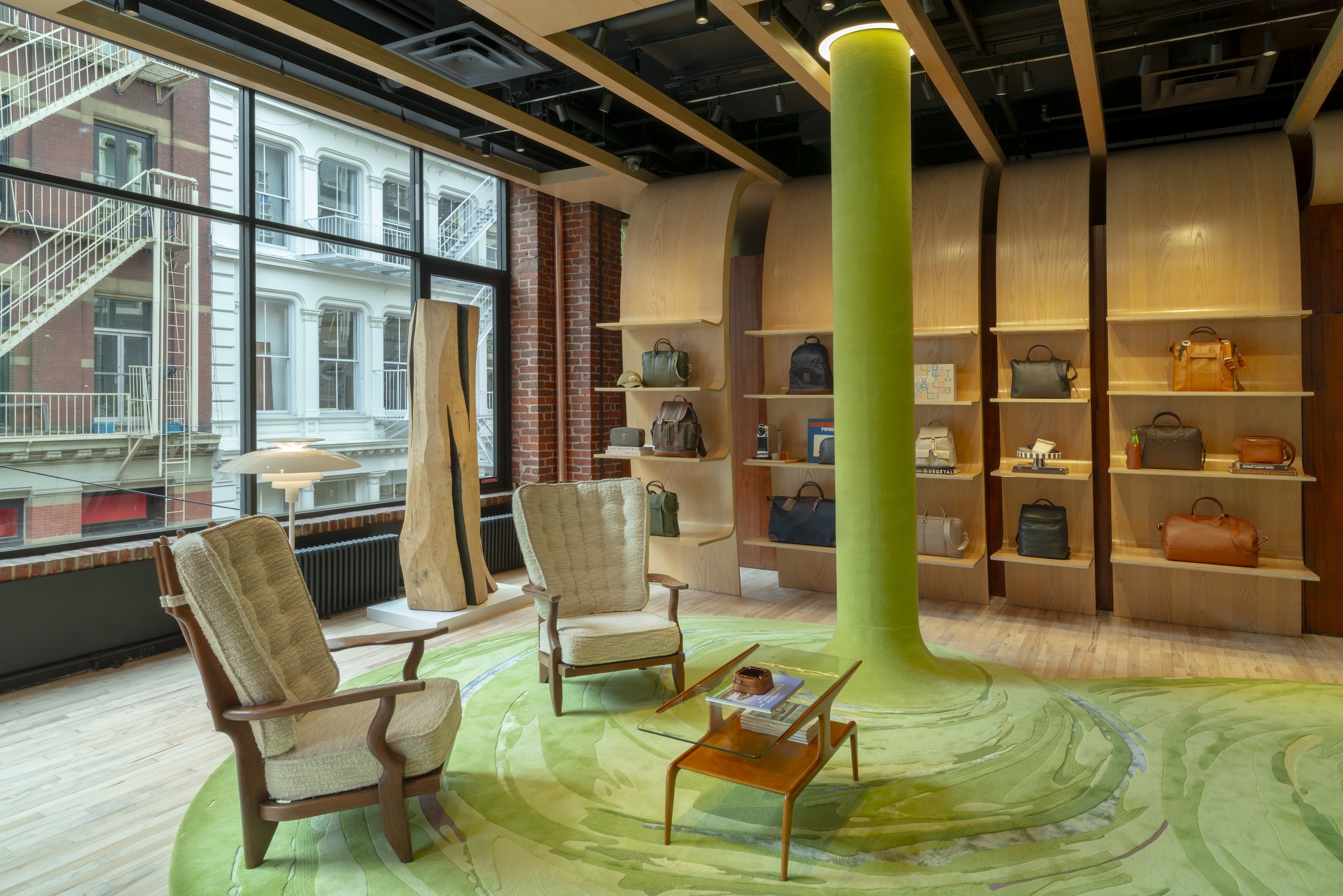
Blending Tradition and Modernity in Interior Design
In updating the store, the designers embraced the principle of opening up spaces while preserving touches of the original design. They opened up the main upper shopping floor, retaining a series of curved plywood forms that extend from the walls to create shelves for bags and accessories. However, some of these forms were removed to allow more natural light in and improve sightlines within the store.
Design Details and Natural Elements
The dense green carpet, specially designed in collaboration with the French company Lelièvre, features winding shapes resembling ponds. It stretches across the floor and climbs the room’s columns like velvet trees, adding a sense of warmth and nature to the shopping space.
Touches of Classic Furniture
Custom-designed wooden display units enhance the store’s aesthetic by showcasing silk scarves and small leather goods in an organized and elegant manner. Antique furniture pieces, such as a coffee table designed by Gio Ponti and a 1970s “Croissant” sofa designed by Raphaël Raffel, contribute a cozy and warm atmosphere, transforming the space into a lively area that invites visitors to relax and enjoy the experience.
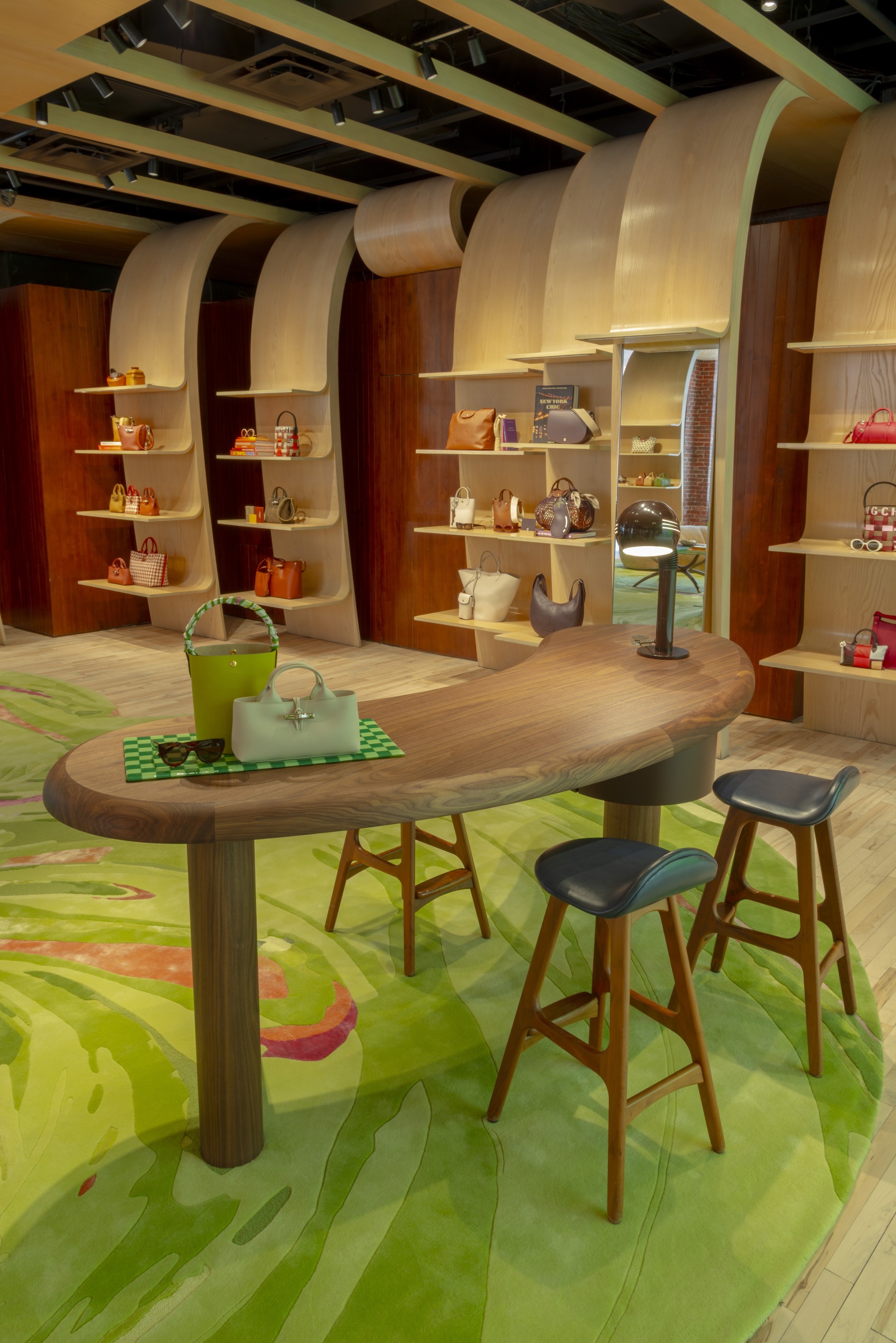
Integrating Art and History into the Shopping Experience
The store features a blend of diverse art pieces, including sculpture and ceramics, with works by contemporary artists such as Dorothée Luriqué, Tanaka Tomomi, and Nitsa Milotopoulos. These pieces add an aesthetic dimension that enhances the store’s character and enriches the visitors’ experience.
Preserving Heritage While Adding Spontaneous Elements
Alongside modern artworks, the store houses archival pieces that carry the marks of time, such as game boards and a display model of a leather-covered tube, bridging past and present and giving the store cultural and historical depth.
This balance between order and randomness reflects what Jean Cassegrain noted:
“We’ve become less strict. We’ve added some randomness—let’s say… unexpected elements.”
This approach embodies a desire to create a livelier and freer environment, reflecting shifts in consumer culture and evolving customer expectations.
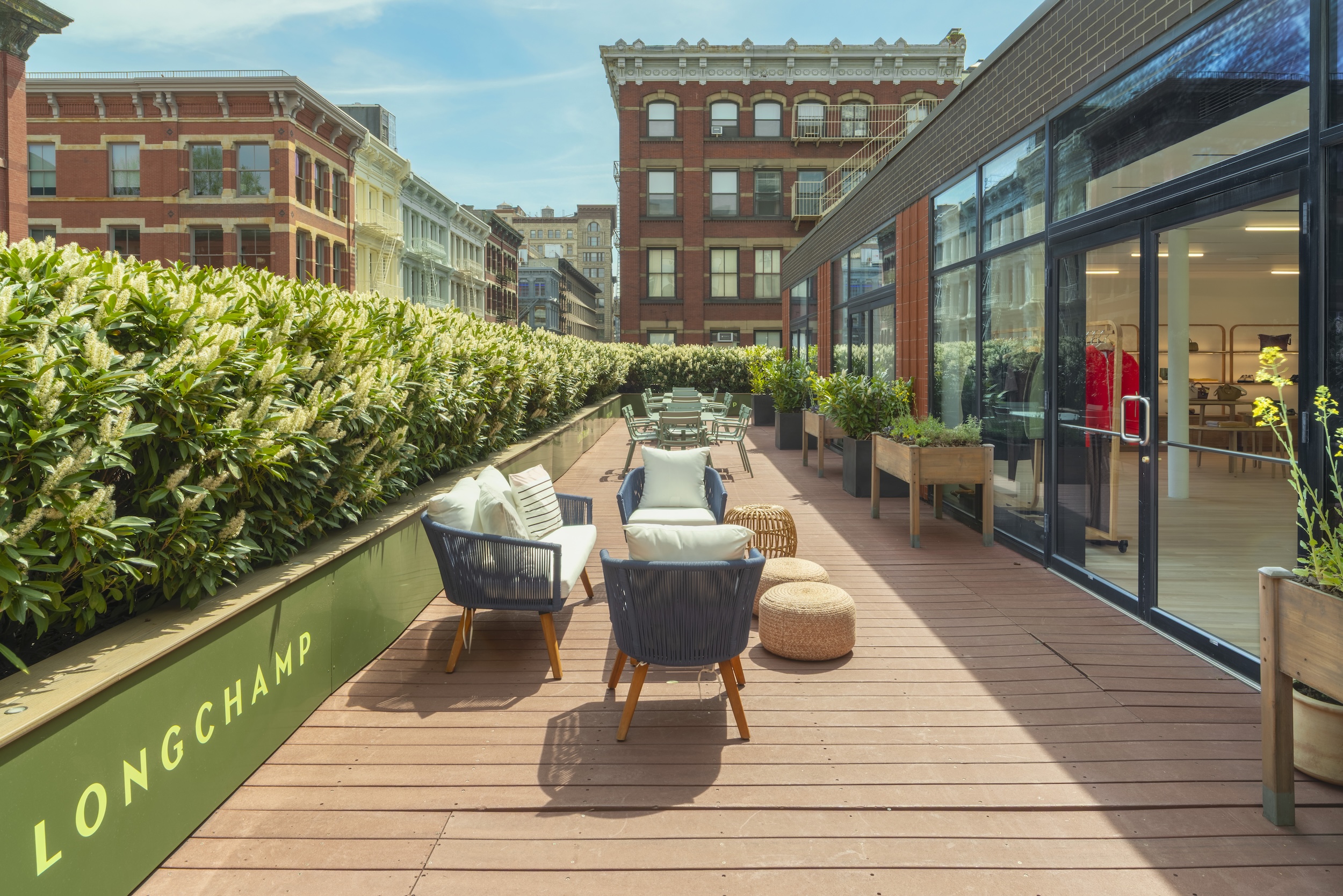
Renewing the Icon: The Sculptural Staircase and the Color of Life
Designer Thomas Heatherwick retained the original sculptural staircase, which was a cornerstone of the store’s design. However, he added a fresh touch with a glossy layer in the signature “Vibrant Green” color of the Longchamp brand. This hue is inspired by the grass of the Longchamp racecourse in Paris and symbolizes the vitality and energy Heatherwick wanted the store to radiate.
Heatherwick says:
“We wanted to make sure it’s lively and bright. From the street, you need to feel that sense of attraction and energy.”
The Designer’s Perspective Over Time
Returning to this project that marked a significant milestone in his career, Heatherwick reflects on his personal and professional growth. Sitting on the famous “Croissant” sofa, he says:
“I think I now have more confidence to be more diverse and less constrained.”
He finishes with a smile:
“I feel proud, not embarrassed, because I have revised, adapted, and breathed new life into it for decades to come.”
This comment reflects the designer’s growth and his ability to adapt with the passage of time. He preserved the spirit of the original design while renewing it to suit the present and the future.

